Teeth Troubles
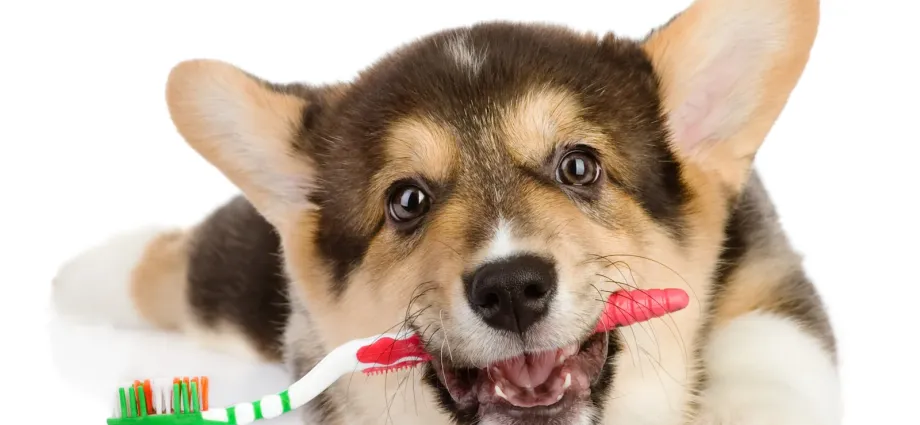
Discover the common dental problems in pet cats and dogs and learn how to maintain oral hygiene and prevent dental diseases.
Pet dental hygiene is a concern for many pet owners, primarily because the symptoms can often go unnoticed. Sometimes, the symptoms are so minor that the dental problems are only discovered at a much later stage.
Regular check-ups are necessary for your pet. However, if you or your pet dislike frequent visits to the vet, you can perform a few routine checks at home to ensure that your pet’s teeth and gums are healthy.
CATS
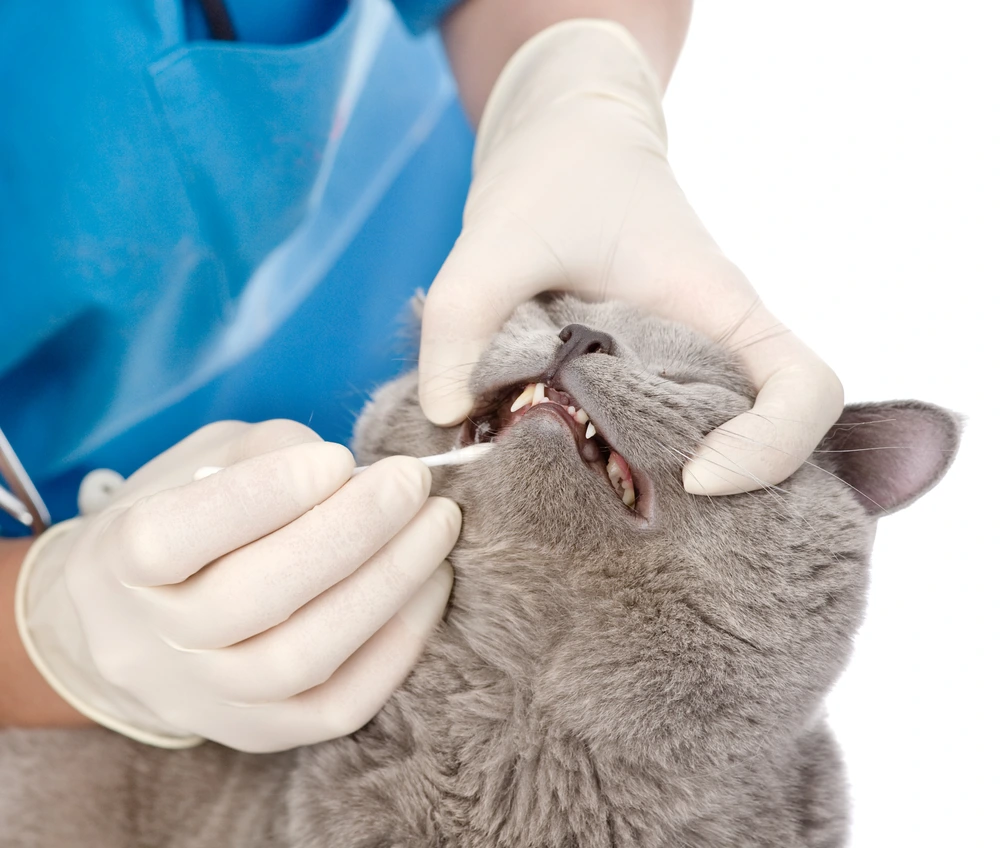
Dental diseases are prevalent in felines, with approximately two-thirds of cats over the age of three suffering from some type of dental disease. The most common problems are related to periodontal disease, gingivitis, and cervical neck lesions, also known as oral resorptive lesions.
The accumulation of tartar and calculus on the teeth is the primary cause of oral disease in cats. The tooth surfaces are home to thousands of bacteria that multiply and produce a layer of plaque. Some of this plaque is naturally removed during eating or by using the tongue. However, the remaining plaque quickly mineralises, forming tartar and calculus.
Tartar is easily identified by its dark colour. It usually starts at the gum edge, especially on the back teeth. In severe cases, tartar and calculus may cover the entire tooth. If the disease is caught at an early stage and thorough veterinary dental scaling and polishing is performed, most of the teeth and gums will fully recover. This is why it is extremely important to ensure that oral check-ups are up to date.
Periodontal disease is an inflammation or infection of the bone and ligaments that support the teeth. As it progresses, these tissues are destroyed, leading to excessive tooth mobility and eventual tooth loss.
Bacteria can spread deep into the tooth socket, creating abscesses or even more severe problems. Bacteria from periodontal disease can affect the entire body, leading to kidney and heart diseases, and eventually organ failure.
Some cats develop severe gingivitis with minimal signs of accompanying dental disease. The affected areas may extend beyond the gums to other areas of the mouth. This condition is often challenging to control and may require repeated treatment, with its diagnosis involving extensive investigative procedures.
Cervical neck lesions result from the progressive destruction of the enamel, resulting in slowly deepening cavities or caries in affected teeth. Once the sensitive parts of the tooth are exposed, these lesions become intensely painful, and the only effective and humane treatment is to extract the tooth. The cause of this disease is unknown; however, poor oral hygiene could be a likely cause.
The following are the common oral diseases in cats. Consult your vet immediately if your cat exhibits any of the following symptoms:
Gingivitis: This inflammation of the gums is mainly seen in older cats. It may start as a dark red line bordering on the teeth. If left untreated, gums may become sore and ulceration may occur.
Periodontitis: If gingivitis invades the tooth socket, the tooth may become loose and an abscess may form.
Stomatitis: This inflammation of the mouth lining may result from a foreign body in the mouth, a viral disease or dental problems. The cat will have difficulty eating and the inside of the mouth will appear red.
Rodent Ulcer: A slowly enlarging sore or swelling on the upper lip.
Salivary Cyst: If salivary glands or ducts that carry saliva to the mouth become blocked, a cyst may form under the tongue.
Mouth Ulcers: Ulcers on a cat’s tongue and gums are sometimes caused by feline respiratory or kidney disease.
Signs To Look Out For
- Overall decreased interest in food.
- Approaching the food bowl but showing reluctance to eat. This also is likely to lead to noticeable weight loss.
- Chew with obvious discomfort, drop food from the mouth, or swallow with difficulty.
- Drooling excessively – the saliva may contain blood.
- The cat may have halitosis or an unpleasant breath odour.
- In some cases, cats may paw at their mouths or shake their heads.
- Some cats may exhibit a preference for moist canned foods and reject dry foods.
- Dental disease and oral pain may account for the ‘finicky appetites’ that some cats display.
- Irritable or depressed mood.
DOGS
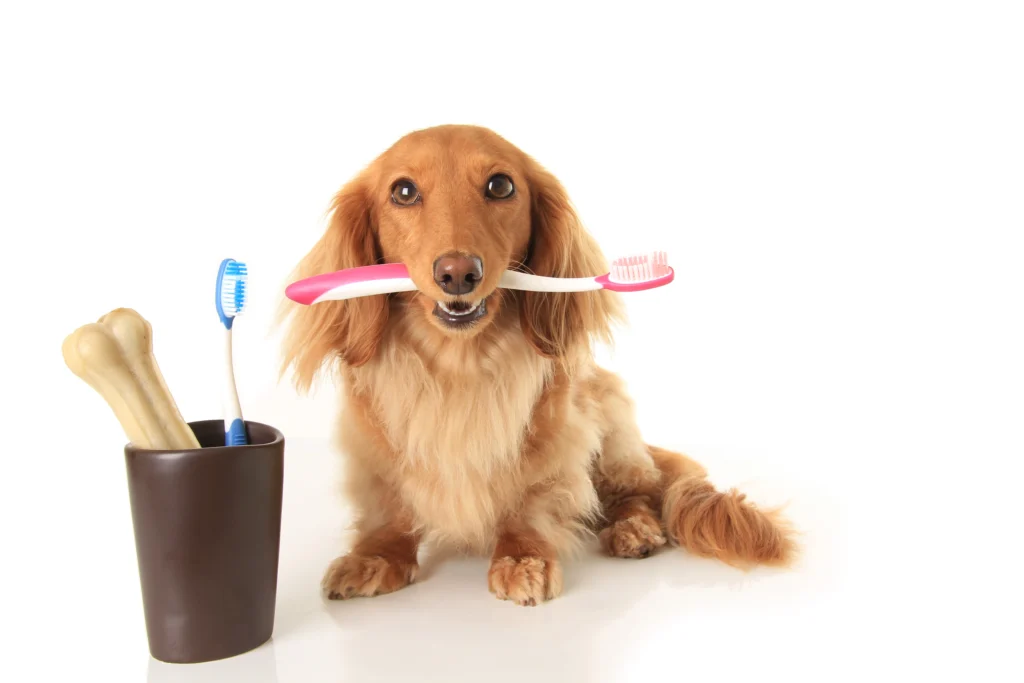
Dogs are also at a high risk of dental diseases, with an estimated 80 per cent or more of dogs over the age of three suffering from such conditions. However, few dogs display obvious signs of dental disease, making it crucial for the dog’s family and veterinarian to uncover this hidden and frequently painful condition.
But the following signs can help you identify possible oral troubles.
- Halitosis, or bad breath, is the most common sign of oral disease. Classic ‘doggy breath’ is not necessarily normal.
- Build up of tartar on the tooth surface.
- A change in the normal gum lines.
- Dogs may preferentially choose softer foods; play with chew toys less and decline crunchy treats.
- You may notice your pet chewing more on the side of his mouth.
- He may chew less in general and this sometimes causes the dog to vomit, seen as undigested, poorly chewed food.
- Increased salivation, and pawing at or rubbing the face can be indications of oral pain.
- Irritable or depressed mood
The most common dental problems seen in dogs are periodontal diseases and fractured teeth. Periodontal disease is a term used to describe inflammation or infection of the tissues surrounding the tooth. Periodontal diseases occur when the accumulation of plaque and tartar cause either periodontal pockets or gum recession around the tooth’s attachment. Left untreated, the infection often spreads deeper into the tooth socket, destroying the bone.
The breeds at greatest risk for developing periodontal disease include:
- Toy Poodles
- Yorkshire Terriers
- Maltese
- Papillions
- Standard Poodles
- Pomeranians
- Shetland Sheepdogs
- Cavalier King Charles Spaniels
- Dachshunds
- Havanese
If your dog showcases any of the following symptoms, consult your vet straight away:
Loose Teeth: For an adult dog, a loose tooth is more suspect. It usually results from trauma to the mouth or from gum loss due to advanced periodontal disease. It may also be a sign of illness.
Misaligned Teeth: Sometimes an adult dog’s teeth are crooked, or he may have a malocclusion—a misalignment of the upper and lower jaw. Some breeds are known for their trademark bite, but if it is extreme, your dog may have difficulty chewing.
Periodontitis: Swollen, bleeding gums are a symptom of periodontal disease, the most commonly diagnosed oral problem in dogs. Tooth
Trauma: Keep an eye on what your dog chomps on. A hearty chew is great for his oral hygiene, but chewing the wrong object can leave him in dental distress. Rigid, solid objects can break or crack a tooth. A broken or cracked tooth can also result from an impact injury, tugging games, or too-rough play.
Tooth Root Abscess: One of the more agonizing oral problems your dog may experience is a tooth root abscess. This occurs if the root of the tooth became exposed to bacteria—perhaps from a crack or break, or form advanced gum damage due to periodontal disease—and an infection has set in. A common type of broken tooth seen in dogs is called a slab fracture. This occurs if he forcibly bit down on a hard object, causing a section of the tooth to flake off, ranging in size from a chip to a larger section.
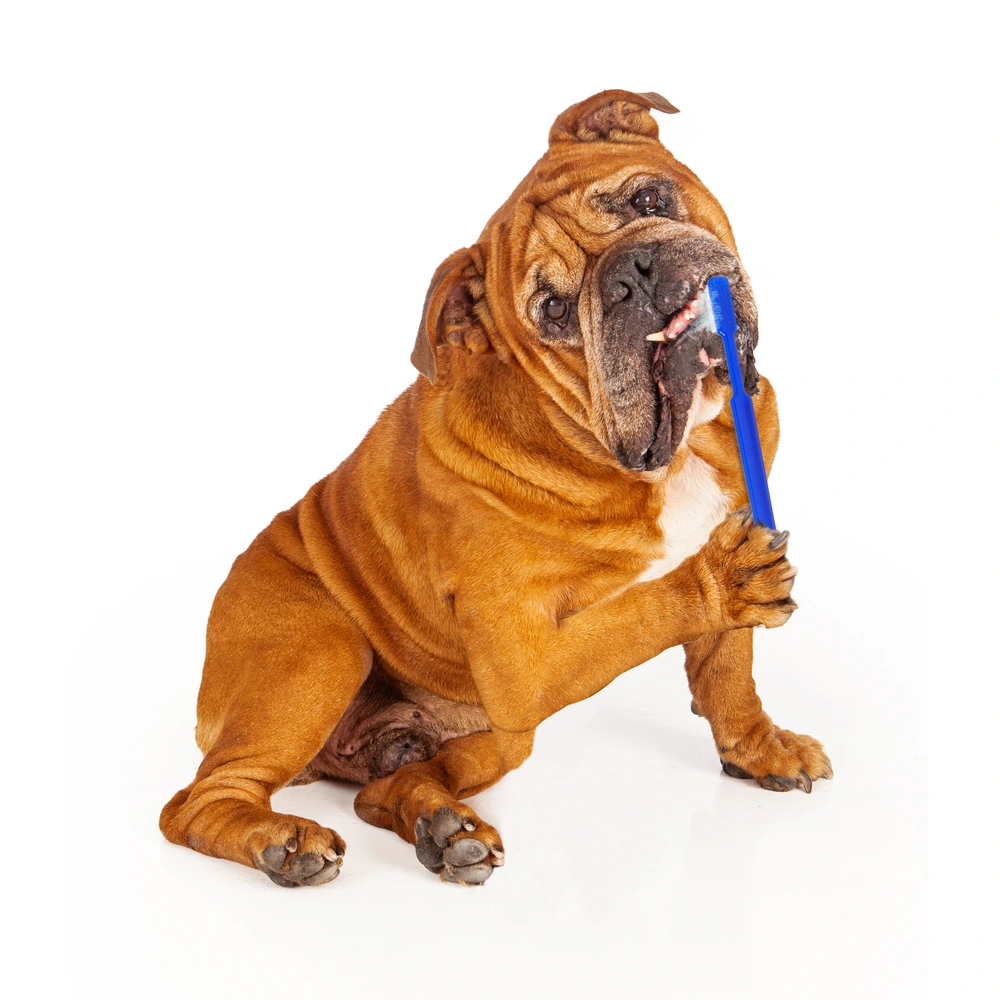
FACT BOX
How to get your pet used to brushing:
- First, get your pet used to the idea of having their teeth brushed. Start by gently massaging the gums with your fingers or touching them with a cotton swab.
- After a few sessions, put a bit of formulated toothpaste on the lips to get them used to the taste.
- Next, introduce a toothbrush designed especially for cats or dogs. It will be smaller than human toothbrushes and have softer bristles. Toothbrushes that you can wear over your finger are also available and allow you to give a nice massage to the gums.
- Finally, apply the toothpaste to the teeth for gentle brushing.
- A veterinary exam beforehand may be helpful to find out if the gums are inflamed. Brushing too hard can be painful and likely to cause discomfort leading to aggressive behaviour.

We asked Dr Dominik Saurek for his expert opinion on oral hygiene for pet cats and dogs.
Q: How frequently should oral checkups and cleaning be done for cats and dogs?
A: Oral checkups in pets should be done at least once yearly. Most vets will routinely check when the animal is being vaccinated. In my opinion, some small breeds of dogs like Yorkshire Terriers, Chihuahuas, etc., should be checked twice per year because of the increased risk of periodontal disease.
Q: Is it possible to maintain dental hygiene at home or is it a must to get it done at the clinic?
A: Yes, it is possible. Prophylaxis is always better than treatment. Most periodontal diseases start in dogs around 3 years of age. By performing regular oral checks and maintaining oral hygiene, we can reduce or at least postpone the formation of oral plaque and tartar (oral calculus).
Q: Are there any products you recommend for maintaining oral hygiene at home for cats and dogs?
A: Yes, there are many products on the market used for maintaining dental hygiene in pets. They range from toothpaste, dental brushes, mouth rinses, dental chews, specialized dental foods, etc. Some of them are very effective but unfortunately not easy to use. For example, toothbrushes may not be tolerated by some animals and could be difficult to use due to small jaw sizes and general discomfort when the owners are trying to brush them. In cats, brushes are almost impossible to use. Dental food and oral bars are good ways to eliminate plaque and reduce tartar. Unfortunately, once tartar is already formed, pet owners have to visit their vet who will recommend dental scaling and polishing to reduce the formation of dental plaque.
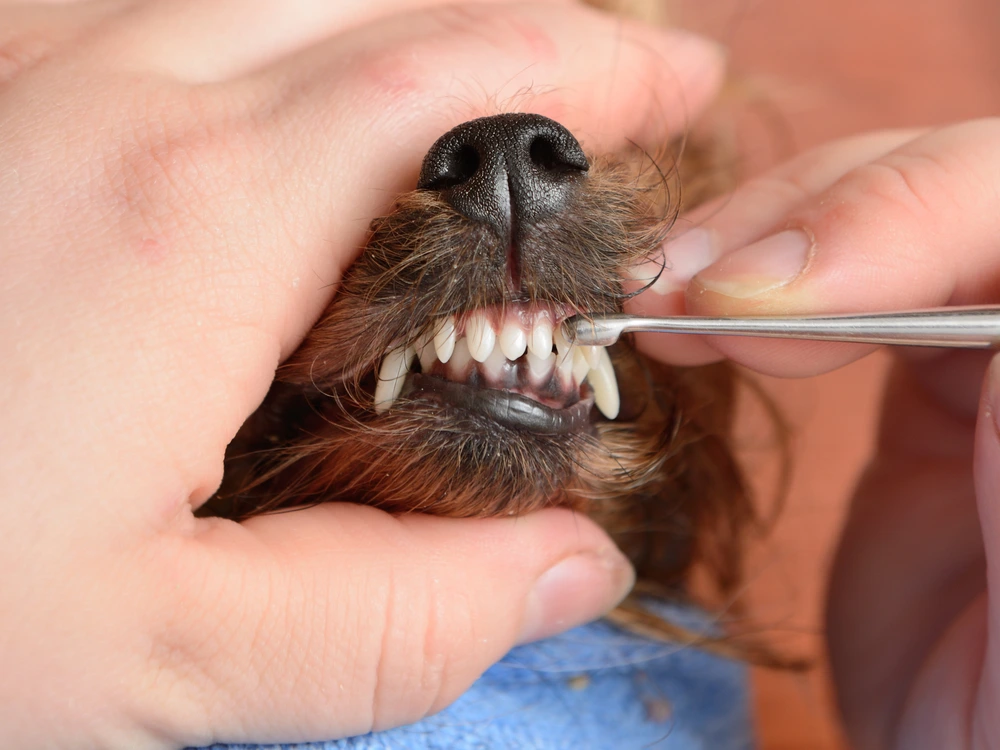
Q: Are there any alternative ways (such as particular food or medicine) to prevent oral diseases?
A: In Dubai, you can purchase special dental food designed for animals of different breeds and sizes, including cats, from veterinary practices. However, they can only reduce and postpone the buildup of tartar but cannot eliminate the existing one. Some special products on the market are added to the drinking water, which can reduce bacterial buildup in the mouth and minimize the formation of bacterial plaque on the teeth.
Q: Any advice on how to better take care of a pet suffering from oral infections/diseases?
A: I would suggest first visiting their local vet, who will perform an oral examination and determine the condition of the teeth and gums. The vet can advise if the pet can be treated with brushing or dental food, or if full dental scaling is required.
Q: What are the most common dental infections and diseases that affect cats and dogs, and what are the common causes of such infections or diseases?
A: The most common oral diseases affecting animals are dental plaque/tartar and periodontal diseases. The underlying problem of periodontal disease and gingivitis is complex and can be related to other diseases like diabetes, chronic kidney failure, viral infections in cats, etc. It is commonly believed that bacterial flora inside the mouth and saliva composition play an essential role in the formation of dental plaques. The plaque later hardens by the minerals in the saliva and transforms into dental calculus, which is firmly attached to the teeth. The calculus spreads under the gum line, allowing bacteria to penetrate that area and damage the supportive gum tissue of the tooth. Bacterial toxins and the remains of food accumulate in that pocket-shaped area, causing the loosening of teeth and likely damaging the jaw bone.
